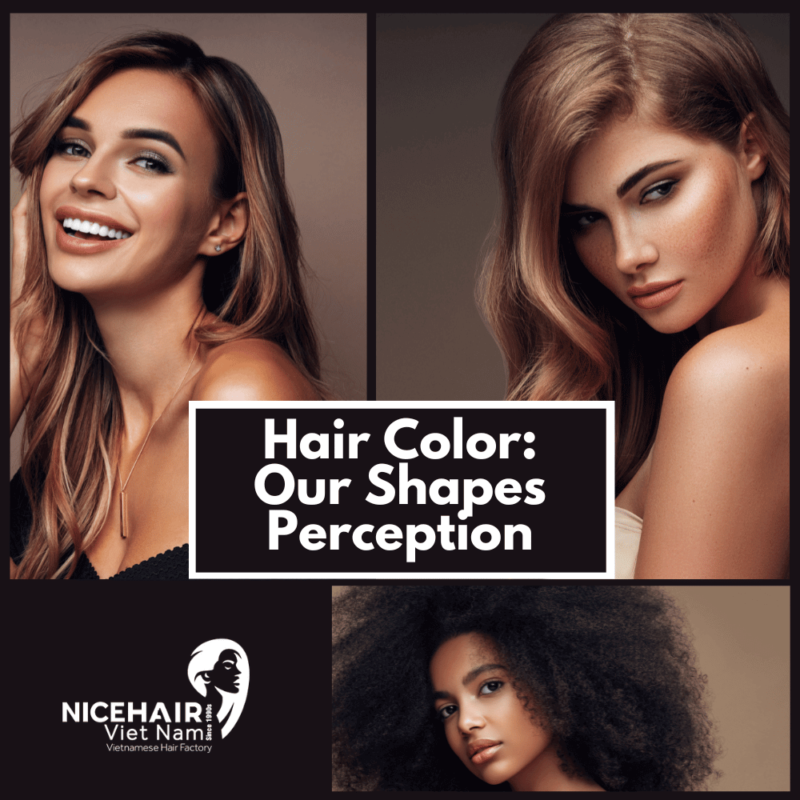From the moment we step into a room, our appearance speaks volumes about who we are. And at the forefront of our physical presentation is one striking feature that captures immediate attention: our hair color. It’s an undeniable truth that hair color shapes not only our visual identity but also the perceptions and assumptions that others make about us. Whether we’re flaunting vibrant red locks, sporting a luscious brunette mane, or embracing the elegance of silver-gray strands, our hair color has the power to influence how we are perceived in society. In this captivating exploration, nicehairvietnam.net delves into the intricate relationship between hair color and its impact on shaping our perception, unveiling the fascinating world where shades, stereotypes, and personal expression intertwine.
Melanin – Diversity and cultural associations
Human hair color is a fascinating subject that involves the interplay of pigmentation, genetics, and cultural influences. The shades we see in our hair are determined by the presence and ratios of two types of melanin: eumelanin and pheomelanin.
Melanin, a pigment produced by specialized cells called melanocytes, plays a crucial role in determining hair color. Eumelanin, which comes in shades of black and brown, contributes to darker hair colors, while pheomelanin, which ranges from yellow to red, leads to lighter hair colors. The balance between these two pigments determines the overall tone of an individual’s hair. Human hair color is not static and can change over time. Factors such as aging, hormonal changes, and genetics can influence the levels of melanin production, leading to shifts in hair color. These changes can result in a person’s hair transitioning from one color to another, sometimes even exhibiting multiple colors on the same individual.
Hair color holds significant cultural associations in various ethnic groups around the world. Certain hair colors are more prevalent within specific geographical regions, often due to the genetic diversity of those populations. For instance, straight dark hair is commonly observed among East Asians and Southeast Asians, while Europeans, West Asians, and North Africans exhibit a wide range of hair colors, including dark, fair, curly, straight, wavy, and bushy. Sub Saharan Africans are known for their uniquely helical, curly, and dark hair. Additionally, gray, white, or “silver” hair is often associated with aging and wisdom across cultures.

Genetics and biochemistry of hair color
The genetic basis of human hair color is a complex and captivating subject that continues to intrigue researchers. While our understanding is still evolving, it is known that the regulation of DNA plays a crucial role in determining pigmentation in humans. In a notable study conducted by Branicki et al. in 2011, a breakthrough was made as they identified 13 distinct DNA variations across 11 different genes. These findings offered valuable insights and the potential for predicting hair color based on genetic markers.
Hair color is primarily influenced by two pigments: eumelanin and pheomelanin. Eumelanin, which ranges from black to brown, and pheomelanin, with shades of reddish-brown or reddish-yellow, are both synthesized by specialized cells called melanocytes. Within these melanocytes, an intricate process takes place involving the conversion of tyrosine into L-DOPA and subsequently into L-dopaquinone. Depending on the specific enzymatic pathways, the L-dopaquinone can then be transformed into either pheomelanin or eumelanin.
While the genetic mechanisms underlying hair color remain a subject of ongoing research, it is widely believed that regulatory DNA plays a significant role. Regulatory DNA sequences control the activity of genes involved in pigmentation, and variations in these sequences can have a profound impact on hair color. The study conducted by Branicki et al. shed light on this aspect by identifying 13 specific DNA variations across 11 genes that showed promising potential for predicting hair color based on genetic markers. Despite the significant progress made in unraveling the genetic basis of hair color, there is still much to explore and understand. Researchers continue to investigate the intricate interplay between regulatory DNA, gene expression, and melanin synthesis to gain a more comprehensive understanding of the factors that contribute to hair color variation. This ongoing research holds promise not only for shedding light on the mysteries of human pigmentation but also for potential applications in forensic science and personal identification.
Different hair color phenotypes arise primarily due to variations in the ratios of two pigments present in the human population: eumelanin and pheomelanin. Europeans exhibit the widest range of pigmentation overall, but other genetic and environmental factors also influence hair color. For example, mutations in the melanocortin 1 receptor (MC1R [1]) gene can result in red or auburn hair, while exposure to ultraviolet (UV) radiation can damage hair and modify its pigmentation. UV radiation, primarily emitted by the sun, stimulates the synthesis of several compounds such as pro-opiomelanocortin (POMC), α-MSH, and ACTH [2]. As a consequence, the production of eumelanin increases. Eumelanin, which comes in two subtypes—black and brown—determines the darkness of the hair color. Higher levels of black eumelanin contribute to darker hair, while increased brown eumelanin leads to browner hair. Both eumelanin and pheomelanin are present to some extent in all human hair.
In black and brown hair, eumelanin constitutes over 95% of the melanin content. Pheomelanin, on the other hand, is typically found in higher concentrations in blond and red hair, representing approximately one-third of the total melanin content. If black eumelanin is absent, the result is strawberry blond hair. Blond hair, on the other hand, arises from small amounts of brown eumelanin without any black eumelanin.
The study of human hair color genetics is a fascinating journey into the complexities of our genetic makeup. While regulatory DNA and the interplay of eumelanin and pheomelanin are known to be central to hair pigmentation, our understanding of the full genetic basis of hair color remains incomplete. However, breakthroughs, such as the identification of DNA variations associated with hair color by Branicki et al., have paved the way for further discoveries.

Natural hair Color
The natural color of human hair encompasses a range of shades, including black, brown, red, and blond. These colors represent the inherent diversity of hair pigmentation observed in individuals.
Color shade scale
The Fischer-Saller scale, named after the notable contributions of Eugen Fischer and Karl Saller, serves as a valuable tool within the realms of physical anthropology and medicine. Its primary purpose is to classify and categorize the vast array of hair colors found among individuals. This scale has been meticulously designed to incorporate a comprehensive range of designations, aiming to encapsulate the full spectrum of hair color diversity observed in human populations. By utilizing the Fischer-Saller scale, researchers and professionals in the fields of anthropology and medicine can accurately and systematically categorize hair colors based on their unique characteristics. The scale takes into account various factors such as hue, intensity, and shade, providing a framework for precise and standardized classification.
In physical anthropology, the Fischer-Saller scale aids in the study of human populations, allowing for comparisons and analyses of hair color distribution across different ethnicities, regions, and time periods. It enables researchers to explore patterns and variations in hair color prevalence, contributing to our understanding of genetic diversity and population dynamics. In the medical field, the Fischer-Saller scale plays a role in diagnosing certain genetic conditions and disorders that are associated with specific hair colors. It assists healthcare professionals in identifying and classifying individuals based on their hair color characteristics, aiding in the recognition and management of certain medical conditions. Moreover, the use of the Fischer-Saller scale helps standardize communication and data collection within the scientific community. It provides a shared language and framework for researchers, enabling them to compare and contrast findings across different studies and populations. This consistency promotes accuracy and facilitates collaboration, ultimately advancing our knowledge and understanding of human hair pigmentation.
The scale consists of the following designations:
The scale begins with the designation “A,” which represents very light blond hair. Moving along the scale, the designations progress from “B” to “E,” encompassing the range of shades within the light blond category. These designations capture the subtle variations in hue and intensity that exist within this specific range of hair color. The designations shift to “F” through “L,” covering a broader range of blond shades. These designations account for the wider array of hues and intensities found within the blond hair category, capturing the diversity of this particular hair color. Moving further down the scale, the designations transition to “M” through “O,” indicating darker blond hues. These designations account for the gradual deepening of blond hair, as it progresses towards a darker shade. The designations shift to “P” through “T,” encompassing the spectrum from light brown to brown hair. These designations reflect the range of colors within the brown category, encompassing various shades and intensities that fall within this realm. Continuing down the scale, the designations transition to “U” through “Y,” representing the darker tones from dark brown to black hair. These designations account for the increasing depth and darkness observed within the brown and black hair color range, capturing the richness and intensity of these shades.
The Fischer-Saller scale further incorporates the use of Roman numerals to denote specific categories. The Roman numerals “I” to “IV” are assigned to shades of red hair, signifying the distinct category of red hair color and its various intensities. By utilizing this scale, researchers and medical professionals are able to precisely describe and compare different hair color phenotypes, facilitating studies and discussions related to human variation and genetic influences on hair pigmentation.
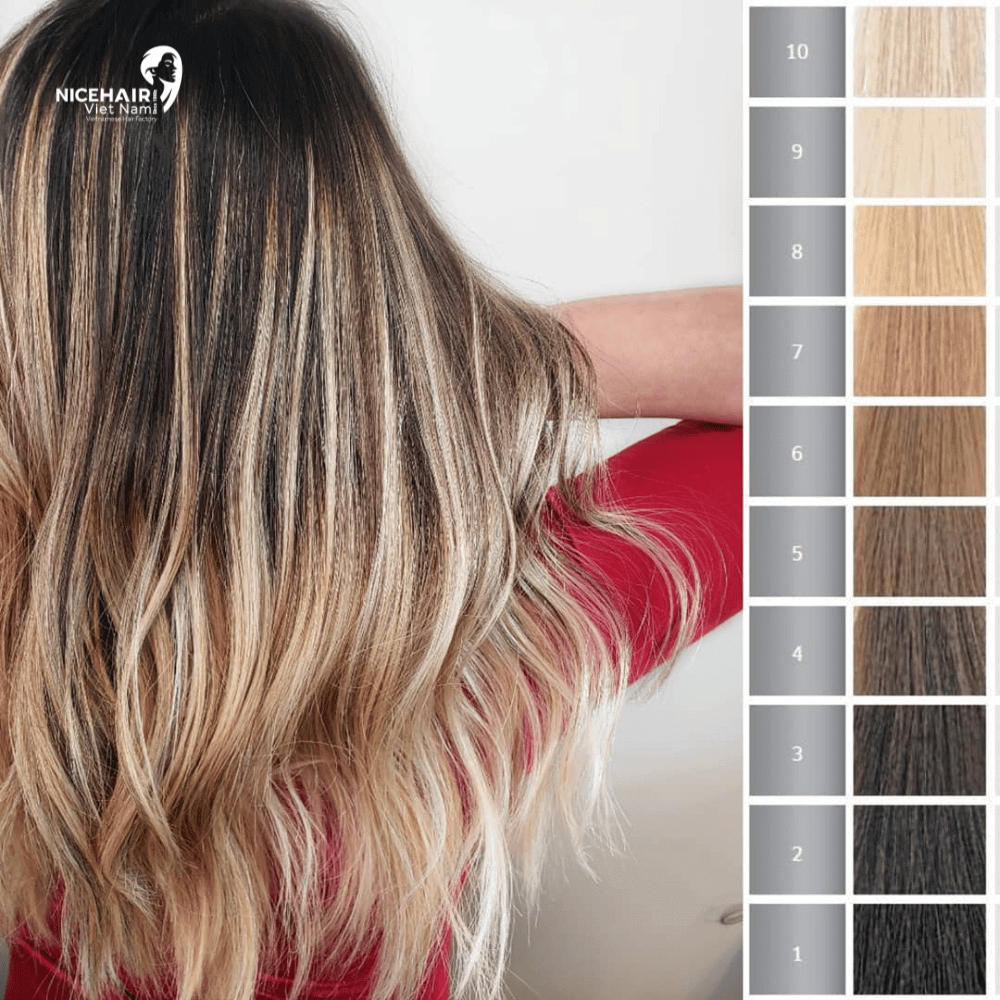
Black hair
Black hair is characterized as the darkest hair color within the spectrum of human hair pigmentation. It possesses an abundant quantity of eumelanin, a pigment responsible for its deep and intense hue. Eumelanin is a type of melanin, the pigment that determines the color of our skin, hair, and eyes. Black hair contains a high concentration of eumelanin, which gives it its characteristic darkness. Black hair boasts a higher number of hair fibers per given area compared to other hair colors. This density contributes to its unique texture and volume, making it highly desirable and versatile for various hairstyles.
The presence of black hair is not limited to any particular region or ethnic group. It is observed in populations across the globe, transcending geographical boundaries and cultural backgrounds. This prevalence highlights the genetic diversity and wide-ranging expressions of human hair pigmentation found worldwide.
Black hair has been the subject of scientific interest and research. The study of hair pigmentation provides insights into the intricate genetic mechanisms that regulate the production and distribution of melanin in the human body. Understanding the genetic basis of black hair can help shed light on broader questions related to human evolution, population genetics, and the interplay between genetics and environment.
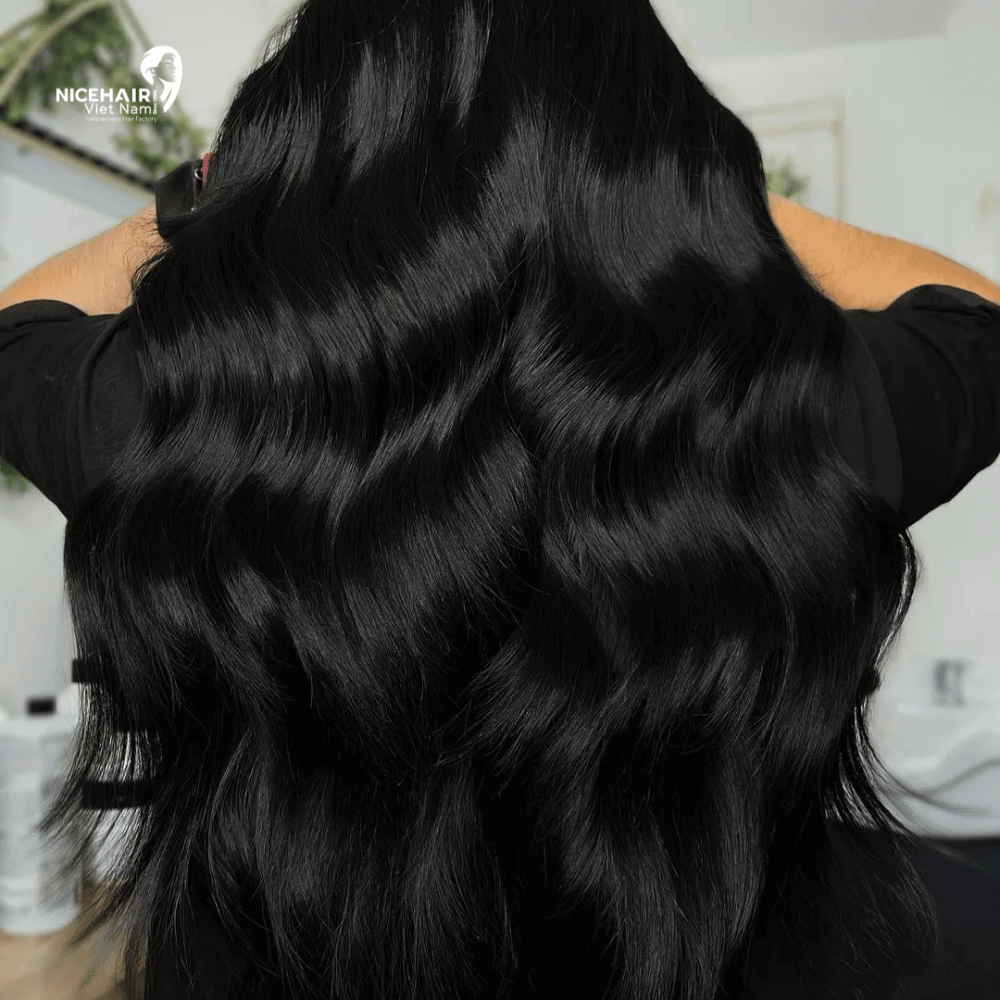
Brown hair
Brown hair, following black, stands as the second most prevalent hair color among humans. It is distinguished by relatively higher concentrations of eumelanin and lower levels of pheomelanin. Among the two subtypes of eumelanin—black and brown—individuals with brown hair possess the brown variant. Furthermore, brown-haired individuals typically exhibit hair strands of medium thickness. Within certain ethnicities, particularly those of European, West Asian, or North African descent, females with brown hair are commonly referred to as brunettes.
Chestnut hair, a distinct shade within the brown hair color spectrum, exhibits a reddish undertone. However, compared to auburn hair, chestnut hair tends to possess a darker and richer reddish hue. This particular hair color, frequently observed among native populations in Northern, Central, Western, and Eastern Europe, also manifests in regions such as Asia Minor, West Asia, and North Africa. The prevalence of chestnut hair among these diverse regions showcases the distribution and manifestation of this unique reddish-brown shade across different populations and geographic areas.
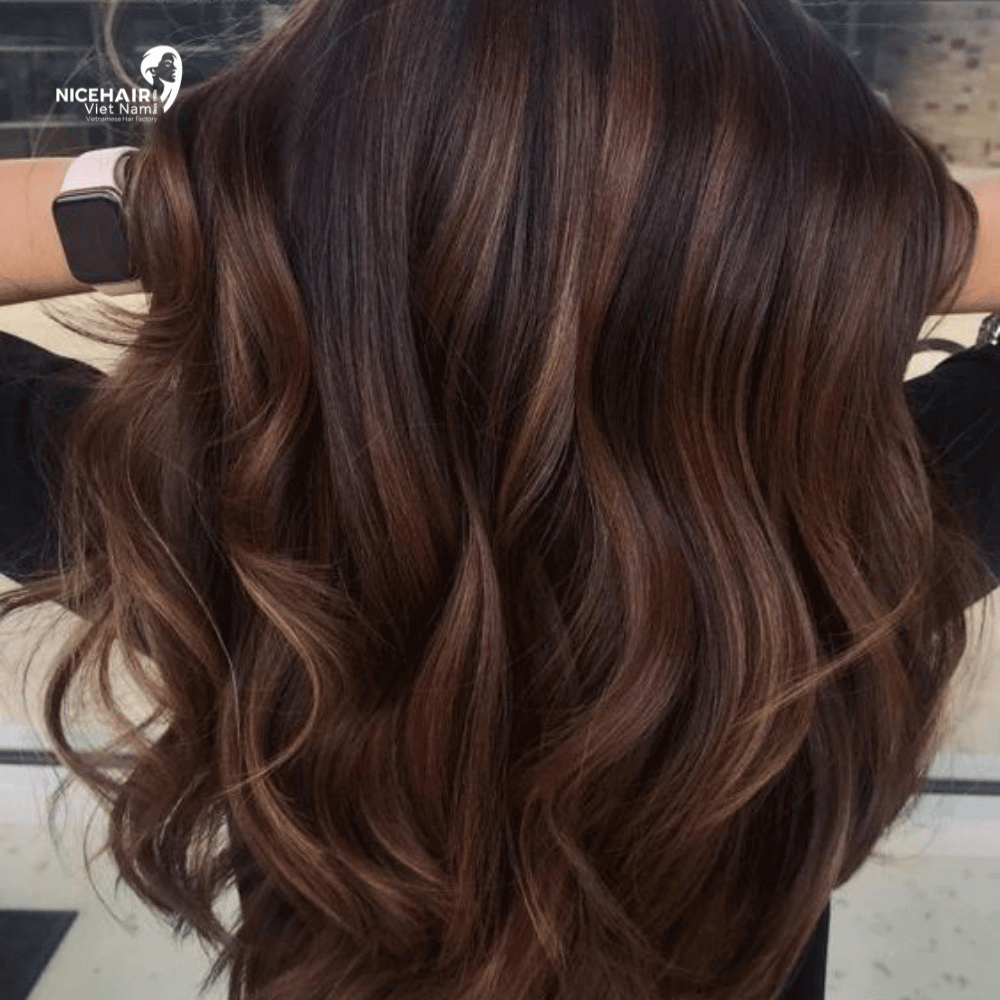
Auburn hair
Auburn hair encompasses a captivating range of hues, spanning from light to dark shades of red-brown. The mesmerizing coloration of auburn hair is attributed to the interplay of two pigments: eumelanin, responsible for brown tones, and pheomelanin, which imparts red tones. Notably, auburn hair exhibits a relatively higher proportion of red-causing pheomelanin compared to typical brown hair. This unique combination of pigments contributes to the distinctive reddish-brown appearance. While auburn hair is most commonly observed in individuals of Northern and Western European ancestry, its presence is not confined solely to these regions. It can also be found in populations across West and Central Asia, as well as North Africa, showcasing the diverse global distribution of this striking hair color. Furthermore, certain genetic variations, such as mutations in the melanocortin 1 receptor gene, can give rise to auburn hair, further adding to the fascinating genetic complexity that underlies hair pigmentation in humans.
The allure of auburn hair, with its alluring blend of red and brown tones, serves as a testament to the intricacies of human genetic diversity and the captivating range of hair colors found across different ethnicities and geographical regions.

Red hair
Red hair exhibits a captivating range of shades, extending from delicate strawberry blond tones to vibrant titian, copper, and even intense red hues. This distinct hair color owes its unique appearance to the dominance of pheomelanin, accounting for approximately 67% of its pigmentation, while eumelanin levels tend to be comparatively low. Red hair, being the rarest among all hair colors worldwide, is present in only about 1-2% of the west Eurasian population. Prominently, red hair finds its highest prevalence in the British Isles, where it is most frequently observed. Additionally, Udmurtia, a region in Russia, also showcases a significant concentration of individuals with red hair. Scotland, in particular, boasts the highest proportion of redheads within its population, with approximately 13% exhibiting this captivating hair color, and roughly 40% carrying the recessive gene responsible for red hair. However, red hair is not exclusive to these regions alone. It can also be found in pockets of Southern Europe, West Asia, North Africa, and Central Asia, further emphasizing the diverse global distribution of this unique hair color.
The rarity and distinctiveness of red hair contribute to its enduring fascination and appeal. Its prevalence in specific regions and the presence of the recessive gene highlight the intricate interplay between genetics, ethnicity, and geographical factors that shape human hair pigmentation. Red hair serves as a testament to the fascinating variations found within our diverse global population.
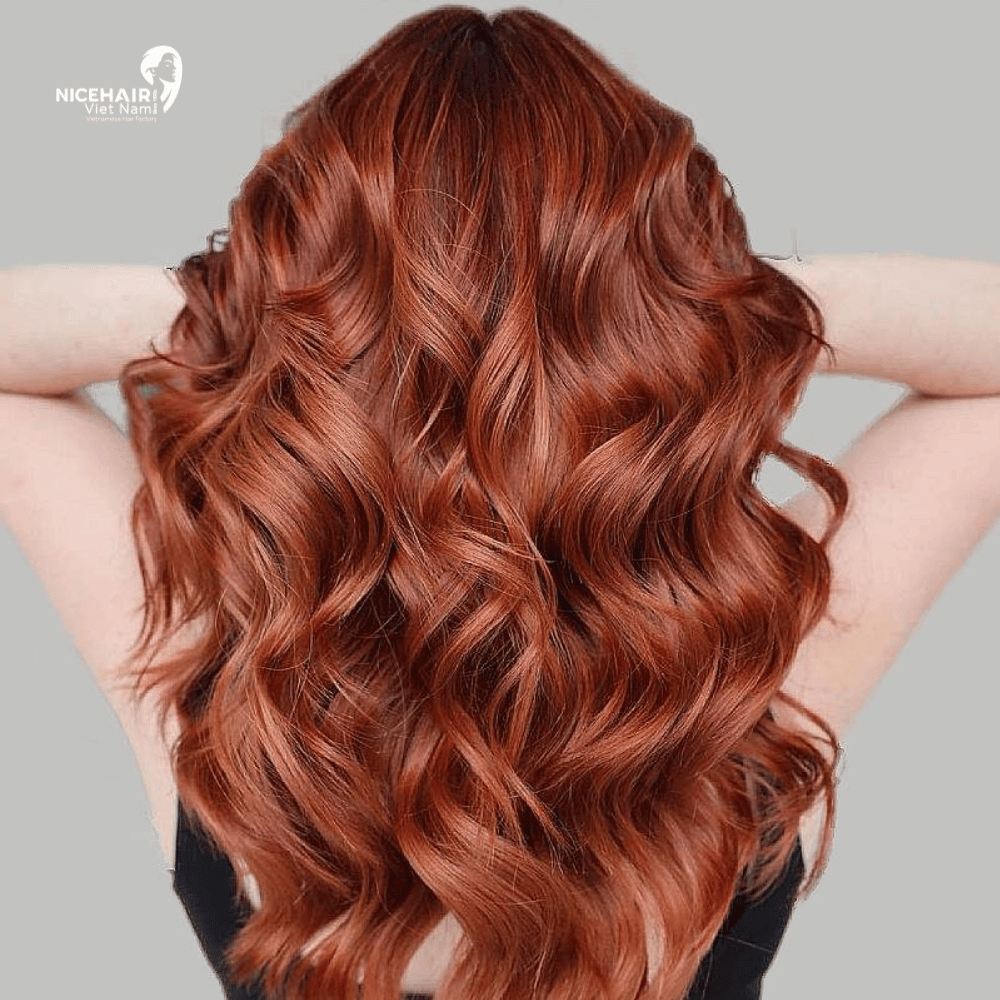
Blond hair
Blond hair, sometimes spelled as “blonde” for women, encompasses a diverse range of shades, spanning from pale white, known as platinum blond, to darker golden hues. A rarer variant known as strawberry blond emerges from the enchanting blend of blond and red hair, featuring a higher concentration of pheomelanin, the red pigment. The composition of pheomelanin and eumelanin in blond hair can vary widely, with small quantities of both pigments present. The proportion of pheomelanin influences the golden or strawberry blond color, while increased eumelanin content results in ash or sandy blond tones.
The prevalence of blond hair is most pronounced among populations of Northern and Northeastern European descent and their descendants. However, it can also be found scattered across various regions of Europe, albeit at lower frequencies. Additionally, blond hair occurs among individuals of West Asian and North African origins, though with reduced prevalence compared to European populations. Intriguingly, studies conducted in 2012 revealed that naturally blond hair observed among Melanesians is attributable to a recessive mutation in the tyrosinase-related protein 1 (TYRP1) gene. In the Solomon Islands, for instance, approximately 26% of the population carries this gene mutation, but it is absent outside the Oceania region.
The captivating array of blond hair shades and its distribution across different populations highlight the intricate interplay between genetics, geographic regions, and ethnic backgrounds in shaping human hair pigmentation. The genetic variations and mutations underlying blond hair serve as fascinating markers of human diversity, evoking curiosity about the historical migrations and interactions that have influenced the prevalence of this enchanting hair color worldwide.
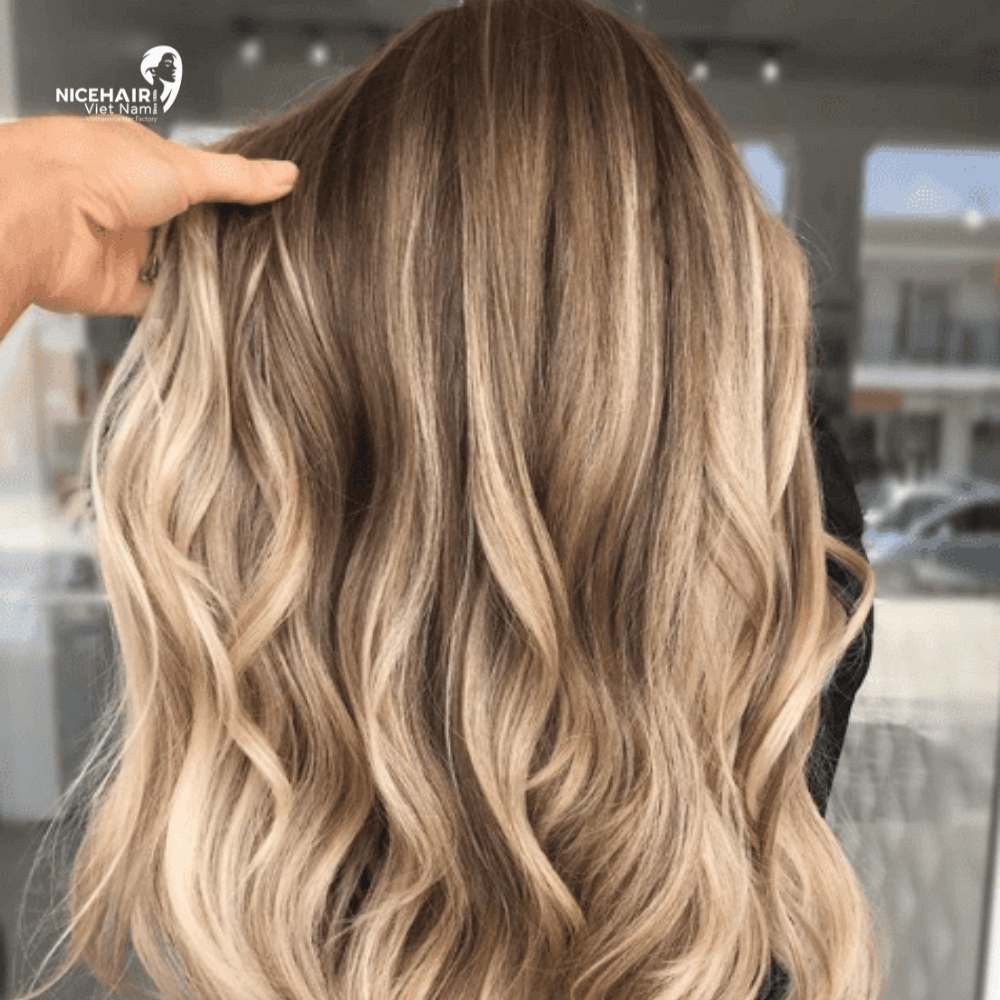
Gray and white hair
Gray or white hair does not arise from a true gray or white pigment but rather from a lack of pigmentation and melanin. The absence of pigmentation causes the transparent hairs to appear gray or white as they reflect light in a specific manner. This natural hair color alteration typically occurs as individuals age, a phenomenon known as aging or achromotrichia.
While the aging process is the primary cause of gray hair, there are other factors that can contribute to its occurrence. Certain medical conditions such as thyroid deficiencies, Waardenburg syndrome, or vitamin B12 deficiency can result in premature graying. Over time, the cells located at the base of the hair follicles gradually slow down their production of pigment and eventually cease its production altogether. In rare cases, a condition called piebaldism, an autosomal dominant disorder affecting melanocyte development, can cause a congenital white forelock. The onset and progression of graying hair vary among different populations. Europeans often begin to develop gray hair in their mid-30s, while Asians typically experience graying in their late 30s. On the other hand, most individuals of African descent tend to retain their original hair color until their mid-40s. However, it is worth noting that permanent white hair from childhood can be genetically inherited without any negative medical implications. This type of hair color inheritance follows X-linked recessive inheritance, making it more common in men, while women can be carriers without being affected themselves.
The graying process is gradual, as observed in a study conducted by L’Oreal. Among individuals between 45 and 65 years old, approximately 74% had some gray hair, covering an average of 27% of their head. Interestingly, about 1 in 10 people showed no signs of gray hair even after reaching the age of 60. There is a proposed phenomenon known as Marie Antoinette syndrome, wherein sudden whitening of hair is attributed to stress. Interestingly, it has been observed that certain hairs can regain their color once stress levels decrease.

Conditions affecting hair color
Aging or achromotrichia
In individuals who are not experiencing hair loss, it has been observed that hair may grow at a faster rate once it turns gray. Unlike the continuous production of pigment in the skin, melanogenesis in hair is closely associated with the different stages of the hair cycle. During the anagen phase, which is the active growth phase of the hair, the hair is pigmented. However, during the catagen phase, which marks the transition phase, melanogenesis is “turned off.” Finally, during the telogen phase, which is the resting phase, the hair is absent, and no pigmentation occurs. As a result, a single hair cannot be white at the root and colored at the terminal end.
The process of graying hair is influenced by multiple genes. The discovery of the Bcl2 and Bcl-w genes was among the first breakthroughs in understanding this phenomenon. Subsequently, in 2016, the IRF4 (interferon regulatory factor 4) gene was identified after a comprehensive study involving 6,000 individuals from five Latin American countries. However, it has been revealed that environmental factors play a significant role in approximately 70% of hair graying cases.
The change in hair color occurs when the production of melanin, the pigment responsible for hair coloration, ceases in the hair follicle. As new hairs grow, they lack pigment and appear gray or white. At the base of hair follicles, there are specialized cells called melanocytes, which produce and store melanin in both hair and skin. The death of melanocyte stem cells is a crucial factor contributing to the onset of graying hair. What remains unclear is why the stem cells of one hair follicle may fail to activate and produce pigment well over a decade before neighboring follicles situated less than a millimeter apart. The intricate interplay between genetic factors and environmental influences shapes the process of graying hair. While genes play a role in determining the onset and progression of graying, external factors also significantly contribute to this phenomenon. The mechanisms underlying the decline and dysfunction of melanocyte stem cells shed light on the complex biology of hair pigmentation and the intricacies of human aging.
Further research is required to unravel the precise mechanisms and interactions involved in the regulation of hair pigmentation and the aging process. Advancements in this field have the potential to provide valuable insights into both genetic and environmental factors influencing graying hair, ultimately contributing to our understanding of human biology and the impact of various factors on hair health and appearance.The graying of hair can be triggered by the accumulation of hydrogen peroxide and abnormally low levels of the enzyme catalase. Hydrogen peroxide builds up in the hair follicles, leading to oxidative stress. Patients with vitiligo, a condition that causes depigmentation of the skin, often experience white eyelashes due to this process. It is believed that a similar mechanism is involved in the graying of hair on the head and elsewhere as a result of aging.
Recent studies have shown that the anti-cancer drug imatinib has the ability to reverse the graying process. However, due to its high cost and potentially severe and life-threatening side effects, it is not practical for altering a person’s hair color. Nonetheless, this discovery opens up possibilities for further research. If the precise mechanism of action of imatinib on melanocyte stem cells, the cells responsible for hair pigmentation, can be uncovered, there is a potential for the development of a safer and more affordable alternative drug in the future. It remains unknown whether imatinib affects catalase levels directly or if its reversal of the graying process is mediated through other pathways.
Understanding the underlying mechanisms behind the graying of hair is crucial for developing interventions that can effectively address this natural aging process. Research into the relationship between hydrogen peroxide accumulation, catalase activity, and melanocyte stem cells provides valuable insights into the complexities of hair pigmentation and oxidative stress. Further studies and discoveries in this field may lead to breakthroughs in developing novel therapies or interventions that can slow down or reverse the graying of hair, enhancing our understanding of human aging and hair biology.

Stress
There are anecdotal reports suggesting that both chronic and acute stress may accelerate the onset of achromotrichia, the graying of hair, in individuals. Supporters of this notion often cite examples of individuals who have experienced intense stress, such as survivors of disasters like Harold Bride from the Titanic, prisoner of war John McCain, or high-level politicians like Bill Clinton and Barack Obama. While there is some evidence linking chronic stress to premature achromotrichia, a definitive connection has not been established. It is known that the stress hormone cortisol accumulates in human hair over time, but the specific impact on hair color remains unresolved. Recent research published in the journal Nature in 2020 sheds some light on the subject, suggesting that stress can lead to hair pigment loss. In a study conducted on black-haired rats, it was discovered that an overactive immune response could destroy both melanocytes and melanocyte stem cells. When these rats were intentionally subjected to panic, their coat color became bleached. Subsequent hair growth revealed the absence of melanocyte stem cells in the damaged follicles, resulting in the sprouting of white hairs and permanent color loss. These findings provide further insight into the complex relationship between stress, immune responses, and hair pigmentation. However, more research is needed to fully understand the mechanisms through which stress impacts hair color and to determine if similar processes occur in humans.

UV damage
Excessive exposure to sunlight is widely recognized as the leading cause of structural damage to the hair shaft. This form of damage, known as photochemical hair damage, encompasses various detrimental effects, including the degradation and loss of hair proteins, as well as the deterioration of hair pigmentation.
Among individuals of European ancestry, photobleaching, a process where the hair becomes lighter due to sun exposure, is particularly common. In a recent study conducted by 23andMe, a genetic testing company, approximately 72 percent of participants with European ancestry reported that their hair lightens when exposed to sunlight. This observation highlights the impact of sun-induced hair lightening within this specific population group. Furthermore, 23andMe has identified 48 genetic markers that potentially influence hair photobleaching. These markers are genetic variations that may play a role in determining how hair pigmentation responds to sunlight and the subsequent lightening effect. This research offers valuable insights into the genetic factors that contribute to the susceptibility of hair color changes caused by sun exposure.
The recognition of sunlight as a significant contributor to hair damage underscores the importance of protecting the hair from excessive UV radiation. Utilizing sun protection measures such as wearing hats, using protective hair products, and limiting direct exposure to sunlight can help minimize the risk of structural damage and unwanted changes in hair pigmentation.

Medical conditions
Albinism is a genetic condition characterized by the absence or reduction of pigment in the hair, eyes, and skin of individuals. Typically, people with albinism have hair that is white or pale blond. However, in some cases, the hair color can manifest as red, darker blond, light brown, or even dark brown, although such occurrences are rare. Vitiligo, on the other hand, is a condition marked by patchy loss of hair and skin color, often resulting from an autoimmune disease. In a preliminary study conducted in 2013, researchers explored the use of light-activated pseudo-catalase to treat the accumulation of hydrogen peroxide, a factor contributing to vitiligo. The findings garnered significant media attention, and it is hoped that further investigations may eventually lead to the development of non-dye treatments for gray hair.
Malnutrition is another known factor that can impact hair color. In cases of severe malnutrition, hair may become lighter, thinner, and more brittle. Dark hair may even exhibit a reddish or blondish hue due to reduced melanin production. The good news is that this condition is reversible with proper nutrition.
Premature graying can also be associated with certain medical conditions. Werner syndrome, a rare genetic disorder, and pernicious anemia, a condition characterized by vitamin B12 deficiency, are two examples of health conditions that can cause premature graying of hair.
Furthermore, a 2005 uncontrolled study revealed an interesting association between hair color and type II diabetes. The study indicated that individuals between the ages of 50 and 70 who had dark eyebrows but gray hair were significantly more likely to have type II diabetes compared to those with both gray eyebrows and hair.
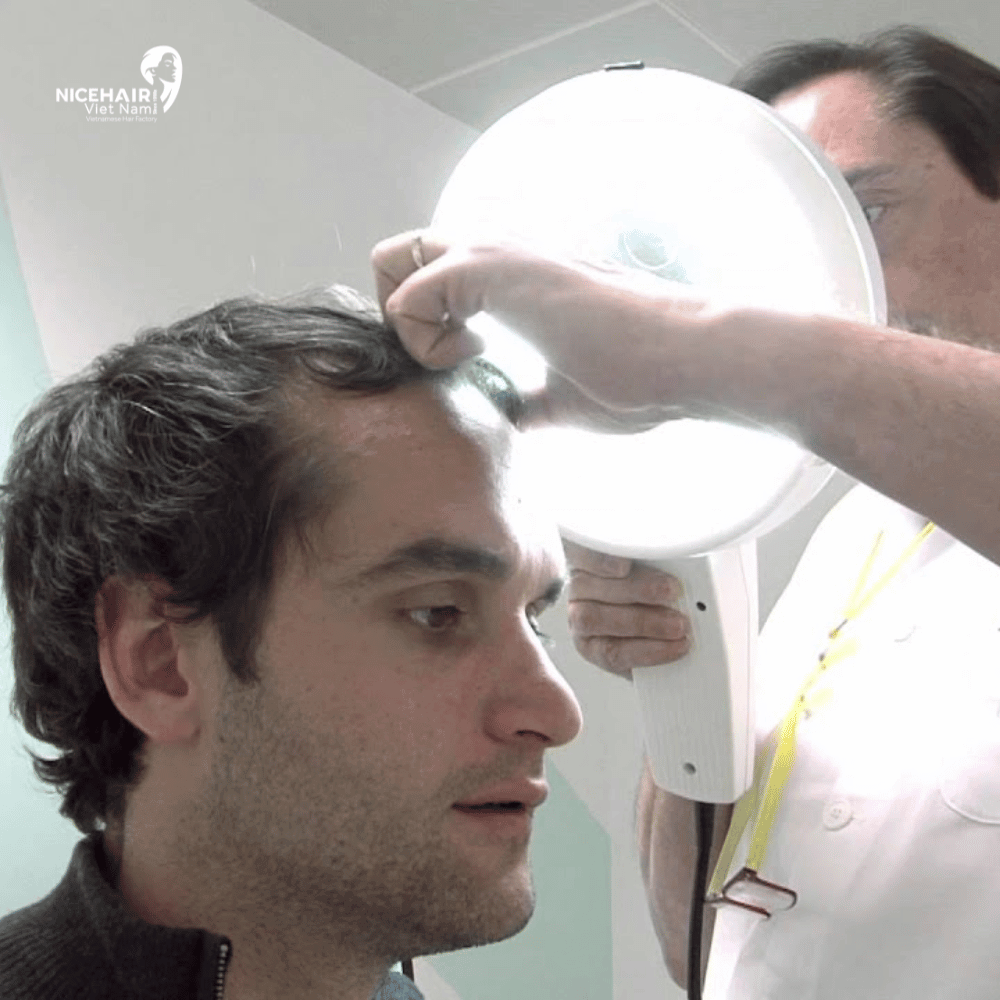
Artificial factors
A study published in the British Medical Journal in 1996 revealed a potential link between tobacco smoking and premature graying of hair. The study found that smokers were four times more likely to experience early onset graying compared to nonsmokers. This suggests that smoking may be a contributing factor to the acceleration of the graying process.
In certain circumstances, gray hair may temporarily darken following inflammatory processes, electron-beam-induced alopecia (hair loss caused by exposure to high-energy radiation), or specific chemotherapy regimens. However, there is still much to be learned about the underlying physiological mechanisms of human graying.
Despite numerous claims made over the years, there is no scientific evidence to support the effectiveness of special diets, nutritional supplements, vitamins, or proteins in slowing down, stopping, or influencing the graying process. Many products have been marketed with such claims, but their actual impact on hair pigmentation remains unsubstantiated.
An intriguing observation was made by French scientists who were treating leukemia patients with a drug called imatinib, commonly used in cancer treatment. They noticed an unexpected side effect: some of the patients experienced a restoration of their hair color to its pre-gray state. This unexpected outcome hints at the potential of imatinib or similar drugs in reversing or halting the graying process, but further research is needed to fully understand the mechanisms and evaluate the safety and efficacy of such treatments.
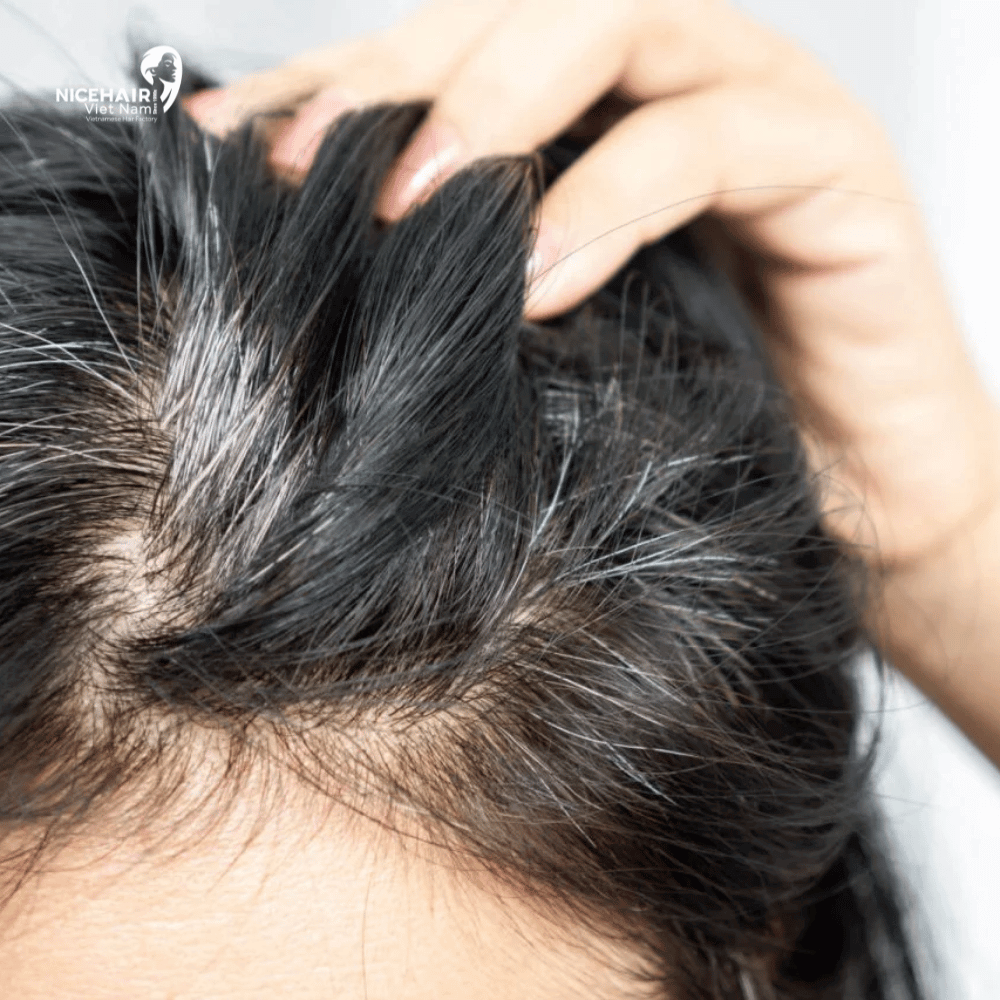
Changes after death
The color of hair in buried bodies has the potential to undergo changes over time. This is attributed to the composition of hair, which consists of a blend of black-brown-yellow eumelanin and red pheomelanin. Eumelanin, being less chemically stable than pheomelanin, is more prone to breakdown when exposed to oxidation. Consequently, the color of hair can change more rapidly under extreme conditions. The rate of hair color alteration varies depending on the environmental conditions surrounding the burial. Under dry oxidizing conditions, such as in burials within sandy or icy environments, the changes in hair color occur at a slower pace. In contrast, under wet reducing conditions, such as burials in wooden or plaster coffins, the hair color changes more rapidly. These observations highlight the influence of environmental factors on the preservation and degradation of hair pigments. The interplay between oxidation and reduction processes determines the stability and alterations in the hair’s coloration during the burial process.
Studying the changes in hair color in buried bodies contributes to our understanding of the complex interplay between postmortem processes and hair pigmentation. It also underscores the importance of considering environmental factors when analyzing the remains of ancient individuals, as hair color can provide valuable insights into their past and the conditions under which they were laid to rest.
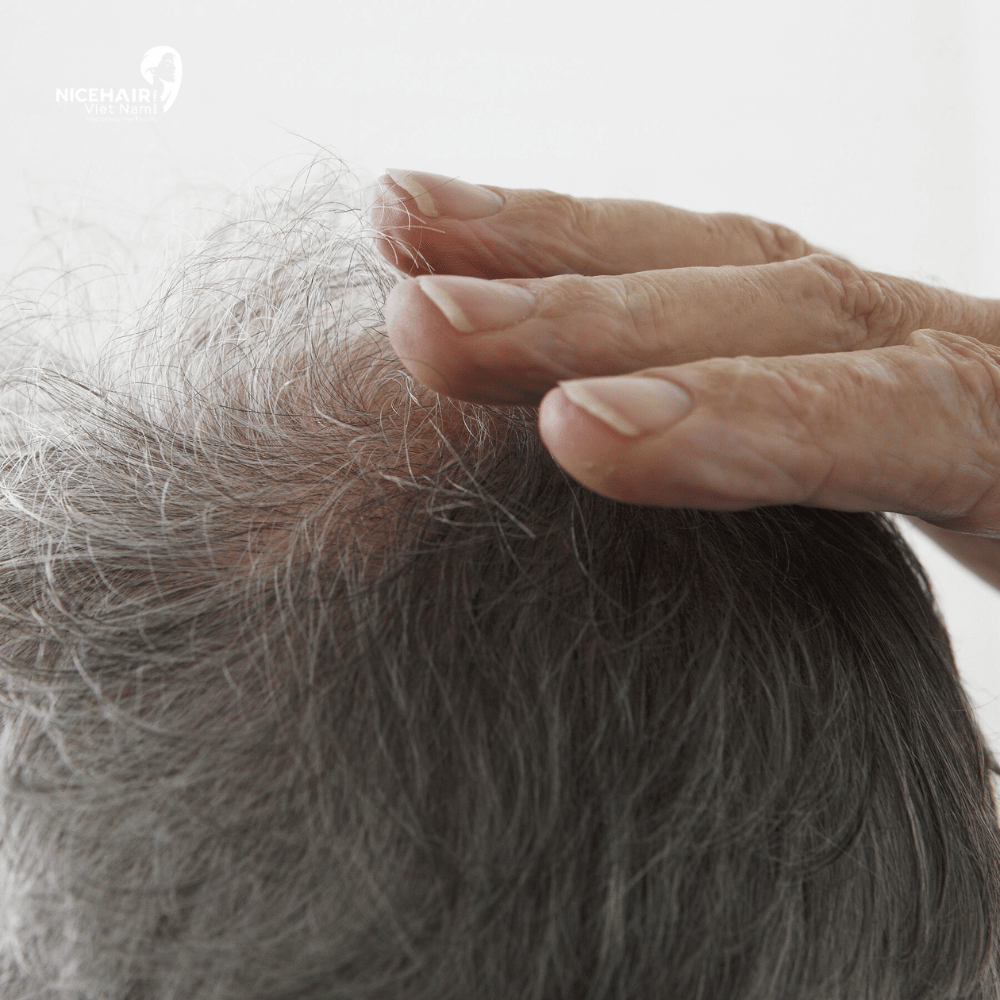
Hair coloring
Hair color can be transformed through a chemical process known as hair coloring. The practice of altering hair color is categorized into two main types: “permanent” and “semi-permanent” hair coloring methods.
Permanent
Permanent hair color involves a chemical alteration of the hair’s structure that lasts until the treated hair is eventually cut off. However, it is important to note that the term “permanent” does not imply that the synthetic color will remain indefinitely. During the coloring process, the natural pigments of the hair are stripped away, and one or more shades of synthetic color are deposited in their place. These color molecules penetrate the cuticle layer of the hair, resulting in a long-lasting effect.
While natural pigments may gradually wash out of the hair’s cuticle, the synthetic color tends to fade relatively faster, depending on the specific dye pigments and their formulation. Permanent hair color offers great versatility, as it allows for lightening or darkening the hair, as well as changing the tone and overall color. However, there are certain drawbacks to consider.
Maintaining the desired look with permanent hair color requires regular maintenance, typically on a monthly or six-weekly basis. This is necessary to blend the newly grown hair with the rest of the treated hair and address any fading that may occur over time. It is worth noting that using a single-color permanent dye can result in a flat, uniform color that may appear unnatural and harsh, especially when applied to lighter shades. To overcome this, a modern trend in hair coloring involves the use of multiple colors. This technique often entails using a base color with additional highlights or lowlights in different shades to create a more dynamic and visually appealing result.
We can make informed choices about transforming our hair by understanding the characteristics and considerations associated with permanent hair color. It is essential to take into account maintenance requirements and the potential impact of fading, as well as explore creative options that combine different shades to achieve a more natural and multi-dimensional look.
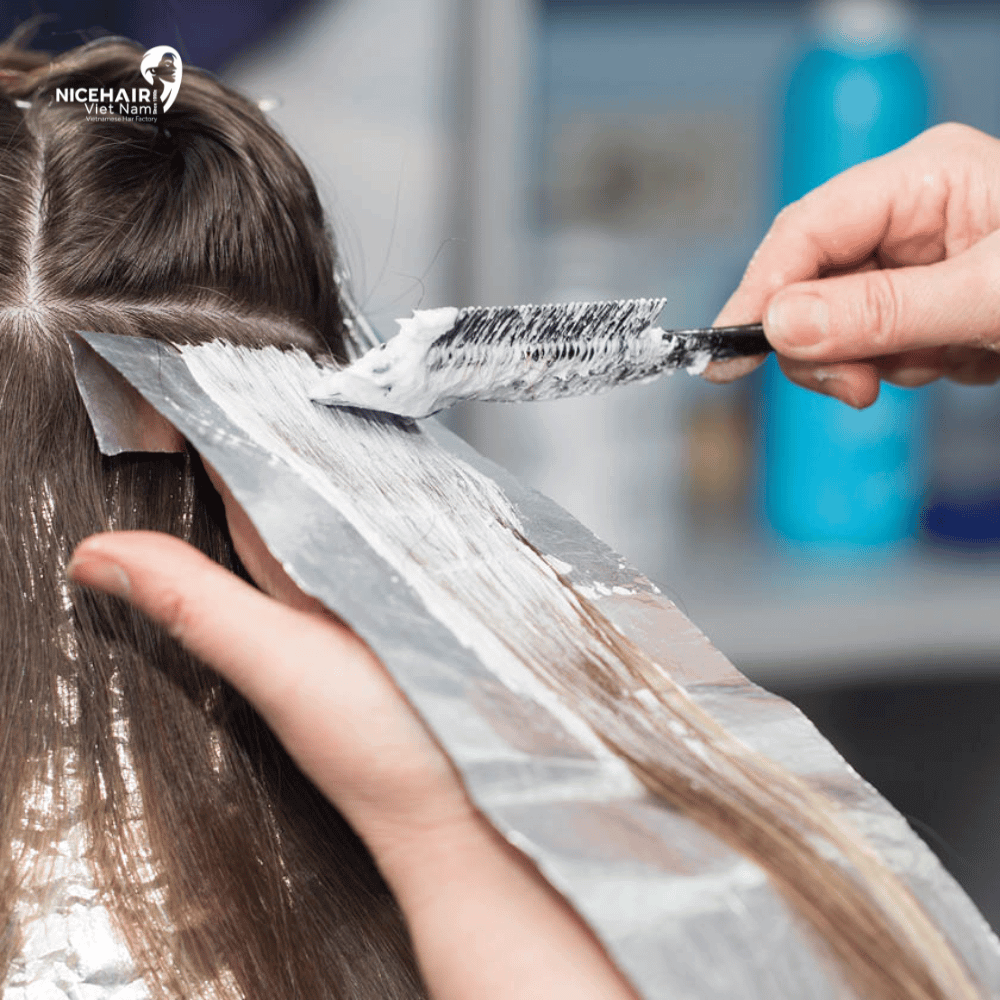
Semi-permanent
Semi-permanent hair color is a type of hair dye that gradually washes out over a period of approximately four to six weeks. This means that root regrowth is less noticeable compared to permanent color treatments. With semi-permanent color, the final outcome on each strand is influenced by its original color and porosity, resulting in subtle variations of color throughout the hair. This variation creates a more natural and less harsh appearance compared to using a permanent dye. However, it’s important to note that gray and white hair may not dye to the same color intensity as the rest of the hair. In fact, some white hair may not absorb the color at all. While a few gray or white hairs can blend in well with the surrounding colored hair, as they become more prominent, there will come a point where using semi-permanent color alone may not be sufficient to achieve desired coverage. In such cases, transitioning to 100% permanent color may be necessary, but this can be delayed by using semi-permanent color as a base and incorporating permanent highlights.
It’s crucial to understand that semi-permanent hair color cannot lighten the hair. Lightening can only be achieved through the use of chemical lighteners, such as bleach. Bleaching is a permanent process as it involves the removal of the natural pigment from the hair.
Another type of temporary hair color is known as “rinses.” Rinses are typically applied to the hair during a shampoo and are washed out during the next hair wash. They provide a temporary color change and are not designed to have a long-lasting effect.
Individuals can make informed decisions about their hair color choices by understanding the characteristics and limitations of semi-permanent hair color,. It is essential to consider factors such as the possibility of regrowth, the mix of gray or white hair and the need for permanent color to get the desired results. Consulting with a professional stylist can help determine the most appropriate method based on an individual’s hair type and desired results.

The topic of hair color and its impact on our perception is a fascinating area of study. Our hair color plays a significant role in shaping how we are perceived by others and can influence various aspects of our social interactions and self-image. From cultural associations to personal preferences, the diverse range of hair colors adds depth and individuality to our identities.
As we continue to unravel the mysteries surrounding hair color, it is important to embrace the diversity and beauty inherent in every shade. Rather than focusing solely on societal ideals or conforming to predefined norms, celebrating and respecting the individual choices and expressions of hair color fosters a more inclusive and accepting society.
Hair color is not just a matter of pigmentation; it is a powerful symbol of our personal identity and a canvas for self-expression. Whether through the natural hues bestowed upon us by genetics or the creative transformations we choose, our hair color is a reflection of our individuality and a testament to the beauty of human diversity.
References
MC1R
MC1R stands for Melanocortin 1 Receptor. It is a gene that encodes a protein responsible for producing the melanocortin 1 receptor, which is primarily located on the surface of melanocytes. Melanocytes are cells that produce the pigment melanin. The MC1R gene plays a vital role in regulating the production and distribution of melanin in the body, which affects hair, skin, and eye color.
Variations or mutations in the MC1R gene can alter the function of the melanocortin 1 receptor. These variations are associated with different hair and skin color phenotypes. Certain variants of the MC1R gene are commonly found in individuals with red hair, fair skin, and a higher likelihood of developing freckles.
The MC1R gene is involved in the synthesis of two primary types of melanin: eumelanin and pheomelanin. Eumelanin produces brown and black pigments, while pheomelanin produces red and yellow pigments. The activity of the MC1R receptor influences the balance between these two types of melanin, thereby impacting hair and skin color.
It is important to note that the MC1R gene alone does not solely determine hair and skin color. It interacts with various other genes and environmental factors. The complex interplay between genetics and the environment contributes to the wide range of hair and skin color variations observed in human populations.
Read more about MC1R here
ACTH
ACTH stands for Adrenocorticotropic Hormone, also known as corticotropin. It is a hormone that is produced and secreted by the anterior pituitary gland, a small gland located at the base of the brain. ACTH plays a crucial role in regulating the production and release of cortisol, a hormone that is produced by the adrenal glands. ACTH is part of the hypothalamic-pituitary-adrenal (HPA) axis, which is responsible for maintaining the body’s response to stress and regulating various physiological processes. The release of ACTH is triggered by corticotropin-releasing hormone (CRH), which is produced by the hypothalamus. When the hypothalamus senses stress or low cortisol levels, it signals the pituitary gland to release ACTH into the bloodstream.
Once released, ACTH travels to the adrenal glands, which are small glands situated on top of the kidneys. ACTH binds to specific receptors on the surface of adrenal gland cells, stimulating them to produce and release cortisol. Cortisol is a hormone involved in regulating metabolism, immune response, blood pressure, and the body’s stress response. ACTH is responsible for maintaining appropriate levels of cortisol in the body. Through a negative feedback mechanism, high levels of cortisol inhibit the release of ACTH. When cortisol levels rise, the hypothalamus and pituitary gland decrease ACTH production, leading to a reduction in cortisol release. Conversely, when cortisol levels decrease, the hypothalamus and pituitary gland increase ACTH production to stimulate cortisol synthesis and release. ACTH also plays a role in the pigmentation of the skin. In certain conditions, excessive production of ACTH can lead to increased melanin synthesis, resulting in darkening of the skin.
In medical settings, ACTH stimulation tests are conducted to assess the functioning of the adrenal glands and diagnose disorders such as Addison’s disease, Cushing’s syndrome, and related hormonal imbalances. These tests involve administering synthetic ACTH and measuring the body’s response in cortisol production.

